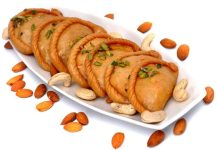Prepare it simple or lavish, pasta is the perfect, fail-proof staple for just about any occasion.
For a quick, tasty meal, nothing beats pasta. It’s simple yet versatile and you can whip it up in a flash. Pair with a rich cream or pesto sauce, toss with chicken fillet or fresh prawns, arid you have a gourmet dish to impress friends with. Drizzle with a light dressing of olive oil and herbs, and voila, you get a wholesome meal. What’s more, it doesn’t take chef-like prowess to prepare pasta just boil some water, throw it in and cook till al dente (literally meaning to the tooth, or firm to the bite). Your only dilemma is choosing a pasta, as there are over 600 varieties!
Read also: the best pasta in Jakarta
The word pasta means œpaste in Italian essentially, a combination of flour and water and refers to all noodle-like pastes or dough. There are two main types of pasta: fresh pasta, or pasta fresca, and dried, or pasta secca. Fresh egg pasta is the most common fresh pasta and can be handmade or store bought. Dried pasta is cheaper to produce and keeps well in hot, dry climates. As a grain-based food, pasta is a nutritious source of complex carbohydrates, the fuel your body needs for energy. High in minerals such as iron, phosphorus and essential B vitamins, a standard serving of cooked pasta (half cup) is just 99 calories, with less than one gram of fat.
The formula for pasta seems so simple and obvious: water+pasta. But sometimes it’s the supposedly simple things that prove to be the trickiest. Getting that al dente texture could be something that is very difficult to do. However, cooking pasta is an art form anyone can learn; it just takes a bit of practice and knowledge.
Read also: make your own pasta.
Follow these tips to cook the perfect pasta for your dinner tonight:
- For every one pound of pasta, bring 5 quarts of water to a boil. Once water is boiling, add about 4 tablespoons of coarse salt. Don’t be afraid to salt your pasta water as this is the only chance you have to bring out the fresh-bread flavor of your pasta.
- When the water water starts boiling, lower the flame so that the bubbles are small. A big, rolling boil will break more delicate pasta such as ravioli or tortellini.
- Don’t boil pasta in a covered pot, as it will quickly overflow. Simply leave a wooden spoon on the pot to prevent spillovers.
- Do not add any oil in the pot. Olive oil is said to prevent the pot from boiling over and prevent the pasta from sticking together. However, oil can prevent the sauce from sticking to the pasta. This especially applies if you are using a sauce to flavor your pasta.
- Follow the package directions for cook times, and you will need to test the pasta 2 or 3 times before it’s just right.
- It is never a good idea to boil two different varieties of pasta together unless they’re similar in size and shape, due to varied cooking times.
Need some pasta recipes to try tonight? Check here:
Curried Pasta with Chicken and Grapes




